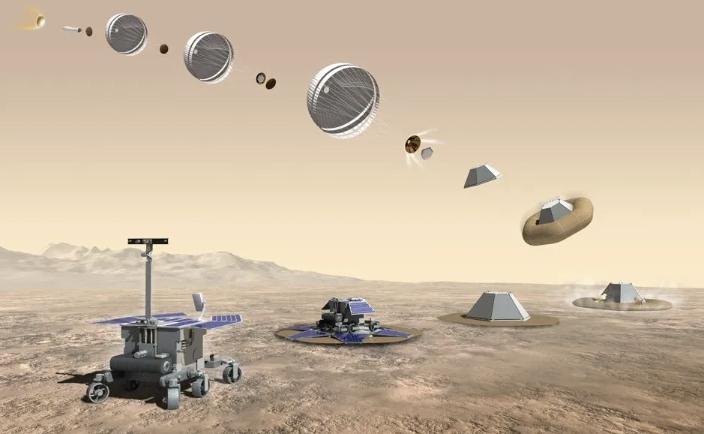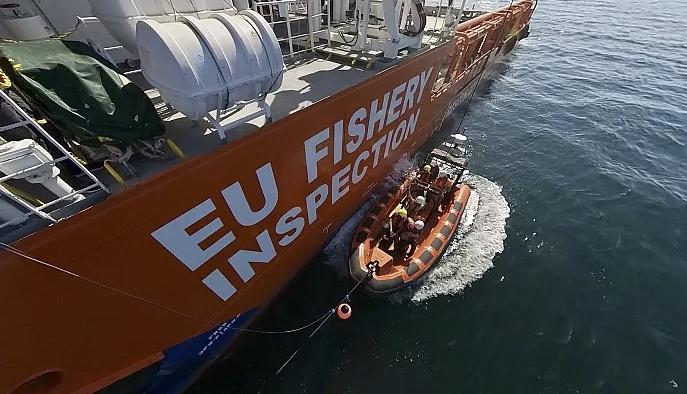The race to discover life on Mars could see the European Space Agency (ESA) trumping NASA by a considerable margin. The scheduled 2028 launch of ESA’s ExoMars Rosalind Franklin rover is tailored to explore the enigmatic Martian subsurface and could unveil the secrets of life on the Red Planet well before NASA’s sample return mission completes its analysis.
Unearthing Martian Secrets
ESA’s Rosalind Franklin rover, equipped with the cutting-edge Mars Organic Molecule Analyzer (MOMA), is slated to embark on its celestial journey, ready to excavate and analyze the Martian soil up to six feet deep.
Unlike NASA’s Perseverance and Curiosity rovers, the solar-powered Rosalind Franklin is designed for extensive subsurface exploration, promising daily advancements of 70 to 100 meters. Its mission: begin data collection immediately upon its touchdown.
Jorge Vago, the ExoMars Project Scientist, affirms the rover’s potential to resolve the longstanding query of a northern ocean on Mars.
“It has a delta at the very tip of our landing ellipse that is dated at 3.9 billion years,” Vago explains.
A revelation that accentuates the possibility of a submerged Mars, echoing mysteries of ancient microbial colonies beneath the Oxia Planum surface.
MOMA: A Synthesis of Innovation
MOMA stands as the epitome of international collaboration, encapsulating expertise from Germany, the U.S., and France. To discern the chemical constituents of collected samples, MOMA will leverage heat or ultraviolet laser pulses, initiating the gas phase transition essential for the mass spectrometer’s analysis.
“The probability that we will find organic molecules, I think is like 100%,” says Vago, amplifying the anticipation surrounding MOMA’s expedition.
To differentiate organic compounds from mineral constituents, MOMA will employ a laser, mitigating the risk of sample contamination.
The Proof of Existence
As MOMA navigates the intricate Martian terrains, its principal investigator, Fred Goesmann, underscores the complexity of interpreting results.
“Converting results into significance” remains a challenge, he notes.
Optimists might be quick to claim discoveries as evidence of life, while skeptics will be engrossed in non-biological explanations. Goesmann states, hinting at the complexities associated with definitive assertions of life discovery:
“‘Proof’ is a big word.”
The eventual revelation might pivot on a consensus that the findings could not be attributed to any other phenomenon but biological existence.
Unraveling the Past and Present
The distinction between past and present life forms is integral to MOMA’s investigation. Vago underscores that present life would manifest through a plethora of well-preserved biomolecules, attributable to their metabolic activities and self-repair mechanisms against radiation-induced damage.
On the contrary, traces of past life, marked by ruptured cell membranes and dispersed chemical constituents, would require meticulous analysis.
“If we happen upon past life relics, we need to be able to tick a good number of independent biosignatures and to do it repeatedly with various samples,” Vago asserts.
In Conclusion
As ESA’s ExoMars Rosalind Franklin rover preps for its monumental journey, the pivotal challenge lies in amassing uncontestable evidence of biological existence.
“The key is to build a body of evidence that cannot be explained away by anything other than biology,” Vago concludes.
In this intricate ballet of science, innovation, and exploration, Europe stands on the cusp of potentially unveiling one of the universe’s most enigmatic secrets, heralding a new chapter in our understanding of life beyond Earth.



